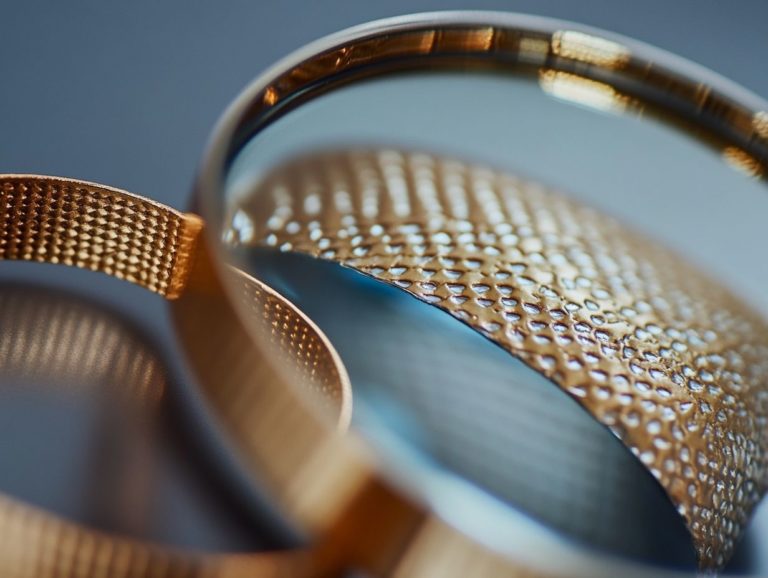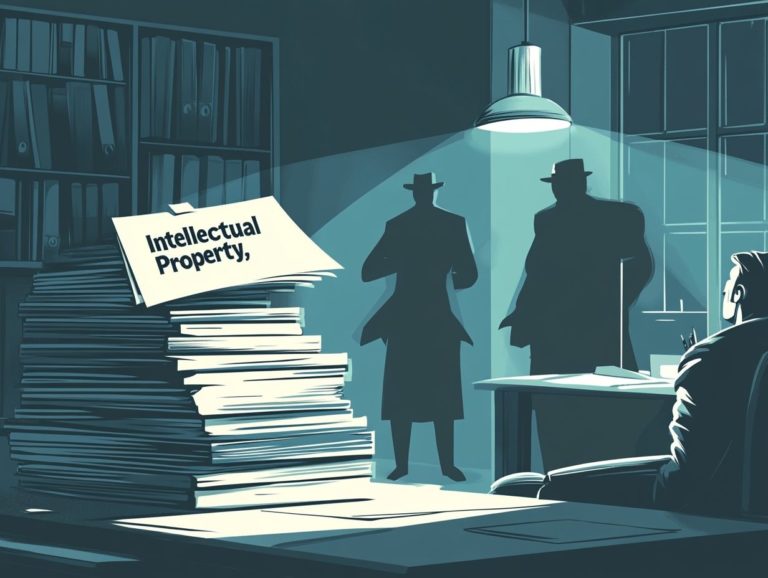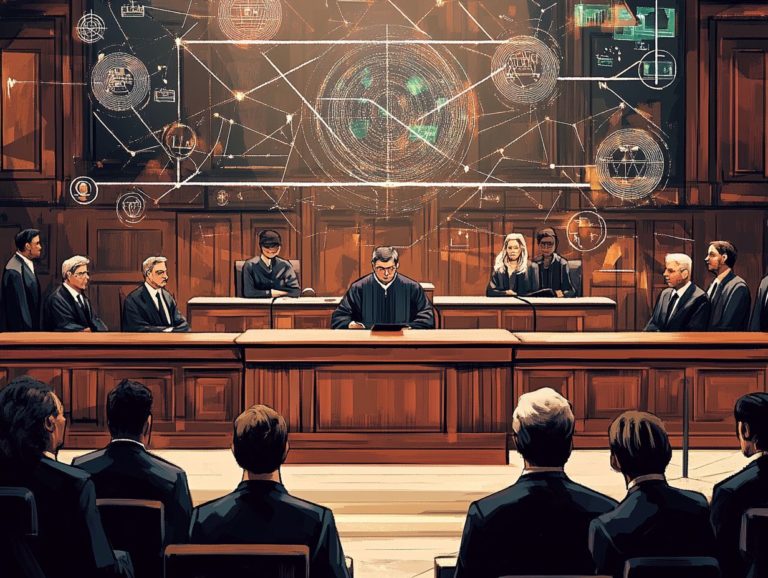How Long Does a Patent Last?
Navigating the world of patents can feel overwhelming, but grasping their significance is essential for both inventors and businesses.
In this article, you’ll find a clear breakdown of the essentials. We’ll start with the basics of what a patent is and explore the various types available to you. It delves into the duration of patents and the factors that influence their lifespan, such as the country of filing and associated fees.
You’ll also discover the benefits of obtaining a patent, alongside the challenges you might encounter during the process. Dive in to arm yourself with the knowledge necessary to effectively safeguard your intellectual property.
Contents
Key Takeaways:

- A patent is a legal protection for an inventor’s unique idea, process, or invention.
- The duration of a patent varies depending on the type of patent, country of filing, and payment of renewal fees.
- Obtaining and maintaining a patent can be costly and time-consuming, but it provides valuable protection for intellectual property and potential monetary benefits.
Understanding Patents
Understanding patents is crucial for you as an inventor or organization seeking to secure exclusive rights to your innovations.
Patents act as a legal shield for your intellectual property, both in the United States and internationally.
This intricate framework is governed by laws like the Patent Act and overseen by the United States Patent and Trademark Office (USPTO). It allows you to file various types of patent applications be it design, utility, or plant patents.
Navigating the detailed requirements can be challenging and defining the claims eligible for protection can be quite the endeavor.
What is a Patent?
A patent is a legal document that grants you exclusive rights to make, use, and sell your invention for a specified period, providing you protection against unauthorized use or infringement.
This exclusive right is designed to encourage innovation by ensuring that you can enjoy the fruits of your creativity without the anxiety of someone else stealing your ideas.
Patents can cover a vast array of inventions, from cutting-edge technologies like smartphones and computer algorithms to pharmaceutical breakthroughs and unique industrial processes.
The patenting process requires you to submit detailed descriptions and claims about your invention, allowing the patent office to evaluate its novelty and utility.
By protecting these innovations, patents not only cultivate a thriving environment of competition and creativity but also enhance public knowledge. The details of your invention become accessible once the patent expires.
Duration of a Patent
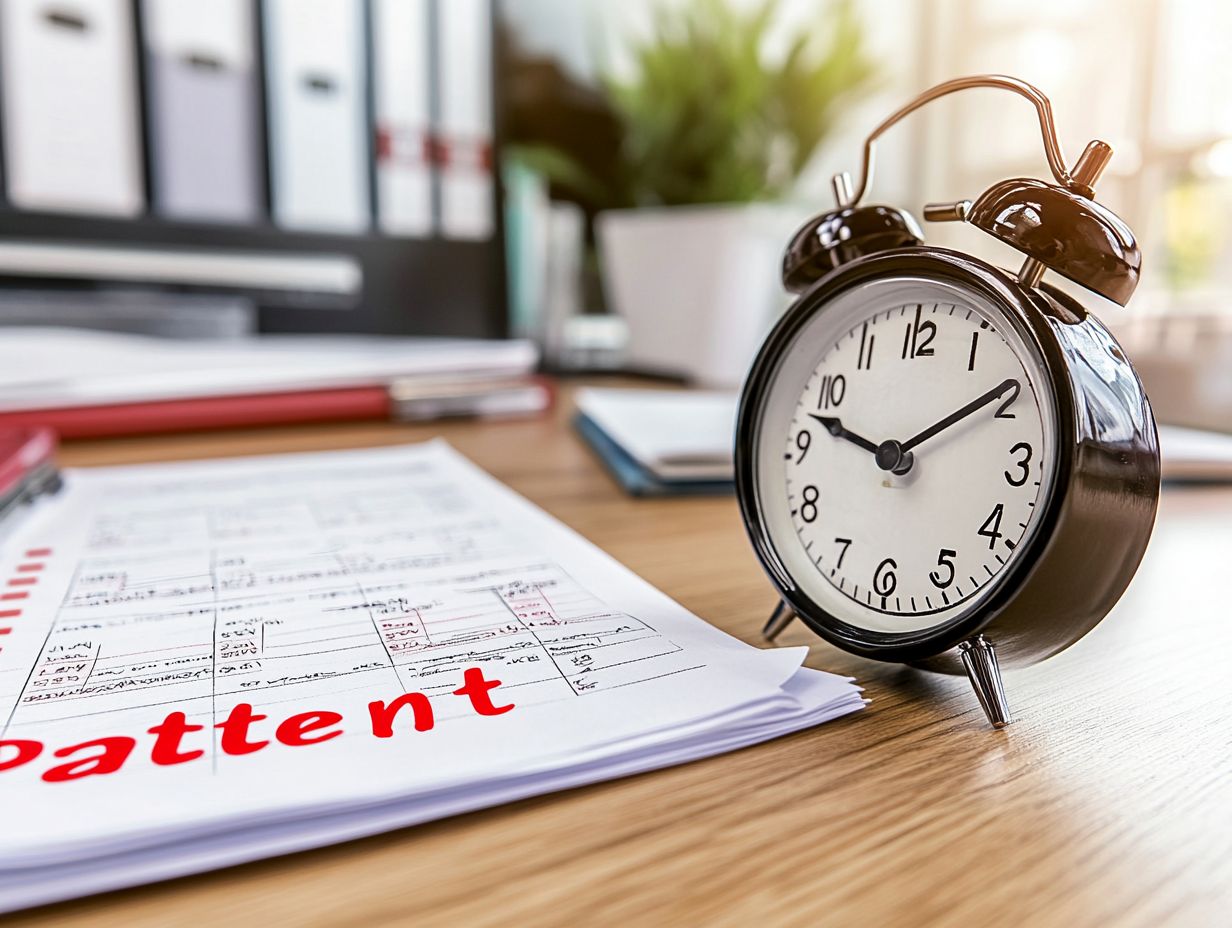
The duration of a patent is a pivotal aspect defining how long you can hold exclusive rights over your invention.
For utility patents, this period generally spans 20 years from the filing date, as outlined in 35 U.S.C. 154. Meanwhile, design patents offer protection for 15 years post-issuance.
This timeframe lets you fully capitalize on your innovations within the bounds of legal protection.
How Long Does a Patent Last?
The duration of a patent is determined by its type: a utility patent typically grants protection for 20 years, while a design patent offers a shorter span of 15 years, both starting from their respective filing dates. For more detailed information, refer to this article on how long a patent lasts.
These timeframes are essential for inventors and designers. They significantly influence how you strategize the commercialization of your innovations. Utility patents may qualify for extensions under specific circumstances, especially if the patented invention faces delays from regulations, which can enhance marketability.
Design patents do not usually allow for extensions, highlighting the necessity of timely filing and strategic planning. Therefore, you must carefully evaluate your intellectual property needs when deciding between utility and design patents, ensuring that your creations are safeguarded for the maximum duration allowed by current laws.
Factors Affecting Patent Duration
The duration of a patent can be influenced by several key factors. These include potential adjustments stemming from delays in examination, extensions that may be granted under specific circumstances, and the prompt payment of maintenance fees.
Each of these elements plays a vital role in enabling you to retain your rights over your valuable innovations.
Don’t wait! Start your patent application today to protect your groundbreaking ideas.
Types of Patents

You ll find that there are three primary types of patents recognized in the United States:
- Utility patents, which cover new and useful processes, machines, or compositions;
- Design patents, aimed at protecting the ornamental design of an object;
- Plant patents, awarded for new varieties of plants.
Each type offers its own distinct rights and protections under U.S. patent law.
Utility patents are, without a doubt, the most common. They include inventions that offer real-world advantages, like improved manufacturing techniques or innovative pharmaceutical formulations.
On the other hand, design patents hone in on aesthetics, granting you the exclusive right to manufacture, sell, or distribute your unique designs, stopping others from making money from your designs.
Plant patents offer a specialized form of protection for botanists and horticulturists. They allow you to claim ownership over newly cultivated varieties. This not only encourages innovation in agriculture but also ensures that your hard work is recognized and rewarded.
Country of Filing
The country in which you file your patent plays a crucial role in determining the extent of protection it offers. Domestic patents grant you rights solely within the United States, while foreign patents require you to submit separate applications in each country or region where you seek protection.
You need to think carefully about your international filing strategy to effectively safeguard your inventions. Various international agreements, such as the Patent Cooperation Treaty (PCT), which simplifies the process of applying for patents in multiple countries, and the Paris Convention provide a streamlined approach for obtaining patents across multiple countries.
Grasping the nuances of each country s legal framework is essential, as the level of protection and enforcement can vary significantly. For example, some countries might have shorter patent terms or more stringent examination processes, which could influence your overall international patenting strategy.
You should seek expert advice to navigate this complexity effectively.
Renewal and Maintenance Fees
To uphold the rights granted by your patent, you must pay maintenance fees at regular intervals. This ensures that your patent remains in force, effectively protecting your exclusive rights from expiration.
These fees are structured according to the type of patent and can vary significantly; for example, utility patents typically come with higher maintenance fees than design patents. This difference reflects the complexity and potential market value of your invention.
If you neglect to pay these fees by the specified deadlines, you risk losing your patent rights entirely, allowing others to use your invention without permission. Such consequences underscore the importance of diligently managing your maintenance schedule to safeguard your intellectual property.
Benefits of a Patent
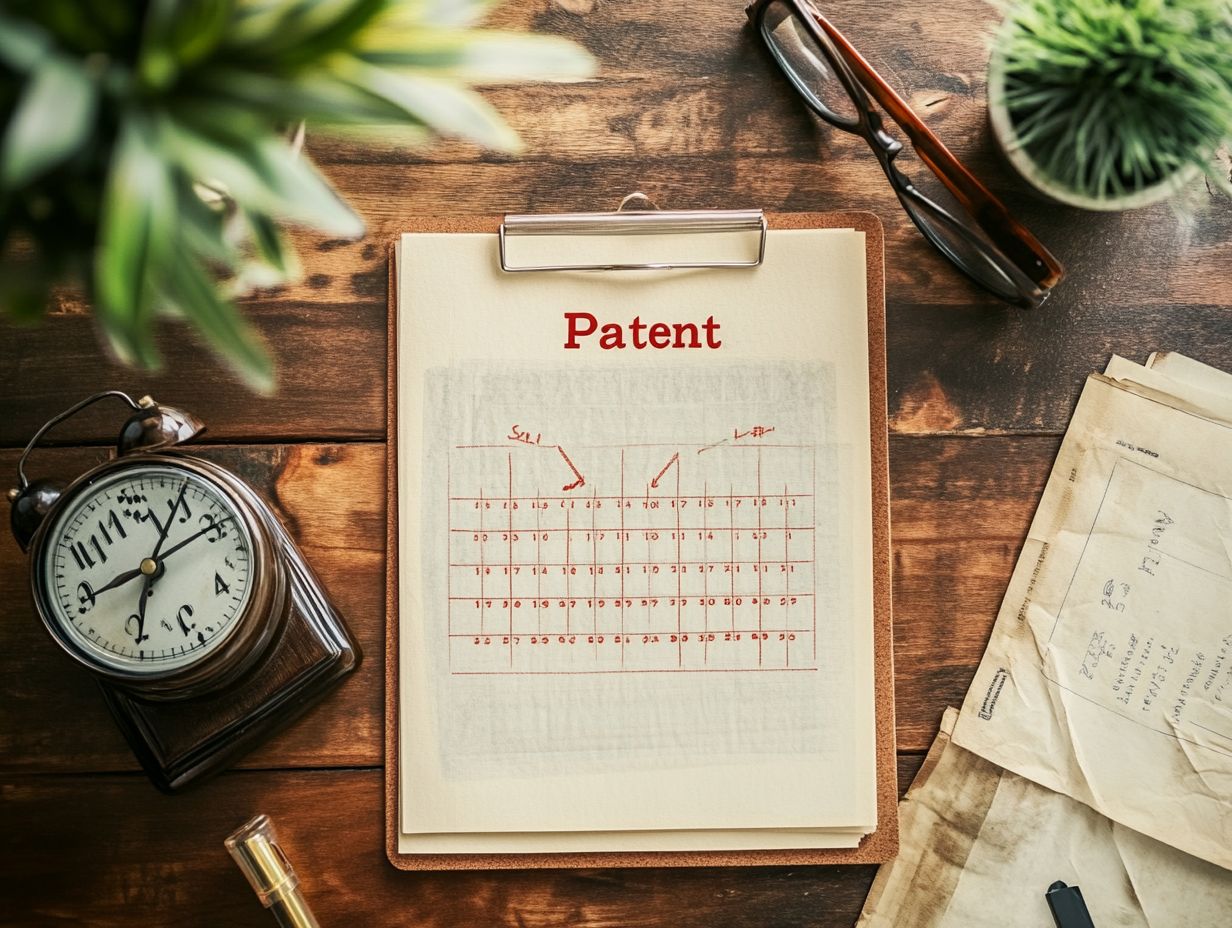
Getting a patent can be a game-changer for you. It not only protects your ideas but also boosts your chances of financial success through licensing agreements or exclusive sales rights.
This strategic move not only fortifies your position but also creates a distinct competitive edge in the marketplace.
Protection of Intellectual Property
A patent stands as an essential instrument for safeguarding your intellectual property, granting you legal rights to your inventions and preventing unauthorized use or reproduction in the marketplace.
This legal structure gives you the power as a creator, ensuring that your unique ideas and innovations remain protected against infringement, which could lead to significant financial setbacks and stifle future development.
When someone unlawfully exploits your patented invention, the consequences can be dire not just financially, but also in terms of your reputation. If you find yourself in such a situation, you have several legal options at your disposal, including filing lawsuits for damages or seeking injunctions to stop the infringement.
By taking advantage of these legal pathways, you can defend your rights, potentially resulting in a resolution that compensates you for the infringement while restoring your exclusive control over your intellectual property.
Act now to protect your innovations and secure your future!
Monetary Benefits
Owning a patent can open the door to significant financial rewards. You have the opportunity to monetize your innovations through contracts that allow others to use your invention for a fee or by selling your patent rights. This allows you to generate income while retaining control over your intellectual property.
Licensing your patents gives you a strategic advantage in negotiating payments made for using your invention. This enables you to tap into new revenue streams without sacrificing your creative vision. By leveraging these contracts, you can establish a steady income flow, which becomes particularly valuable in high-demand sectors.
As others seek to utilize your patented technology, the competitive landscape may shift in your favor, giving you a distinct edge in market positioning. By strategically navigating these avenues, you maximize your financial returns and enhance your potential for sustained influence within the industry.
Challenges of Obtaining and Maintaining a Patent
Navigating the world of patents presents a complex array of challenges for you. You will face substantial costs related to the application process and considerable time needed for thorough examination and approval.
You must also protect your patent rights from infringements to ensure your innovation remains safeguarded.
Costs and Time Involved
The costs and time associated with obtaining a patent can be substantial. Expenses can range from filing fees to attorney costs. The examination process may stretch over several months or even years before a patent is finally granted.
In addition to the initial filing fees required by government entities, you will encounter maintenance fees that must be paid regularly to keep your patent active. Legal expenses can add up quickly, especially if you need expert assistance for drafting claims or navigating patent offices.
The overall timeline for securing a patent varies greatly, often depending on the complexity of your invention and any potential challenges from examiners. Be prepared for the possibility of needing to respond to rejections or amendments during the examination phase, which could prolong the process even further.
Competition and Infringement Issues
Competition in the market can pose significant challenges for patent holders like you. Stay alert to protect your innovations! You need to remain vigilant against potential infringements on your rights and be ready to take legal action to defend your intellectual property.
In this ever-evolving landscape, the risks of infringement often arise from rival firms eager to exploit innovative technologies without the necessary authorization. Understanding the dynamics of your industry is essential; unauthorized use can chip away at your market share and threaten your long-term profitability.
Fortunately, various remedies are available. You can seek injunctions to stop unauthorized use of your patents and pursue monetary damages. These measures not only protect your rights but also act as a deterrent to others who might consider infringing on your innovations.
Navigating this competitive terrain requires a proactive approach to safeguard your valuable creations.
Frequently Asked Questions
- How Long Does a Patent Last? A patent typically lasts for 20 years from the date of filing the application with the United States Patent and Trademark Office (USPTO).
- Does the expiration date of a patent vary for different types of inventions? No, the expiration date is the same for all types of patents. However, the length of the patent term may be affected by certain factors such as delays during the application process.
- Can a patent be extended beyond the initial 20-year term? Yes, in certain circumstances, a patent may be eligible for an extension. For example, if there were delays in the patent approval process, the term may be extended to compensate for lost time.
- What happens to a patent after it expires? Once a patent expires, the invention becomes part of the public domain and can be used freely by anyone without the need for a license or permission from the patent holder.
- Can a patent be renewed after it expires? No, once a patent expires, it cannot be renewed. However, the inventor may file for a new patent for any improvements or modifications to the original invention.
Consider the benefits of patents and seek advice if you are interested in patenting your inventions.


